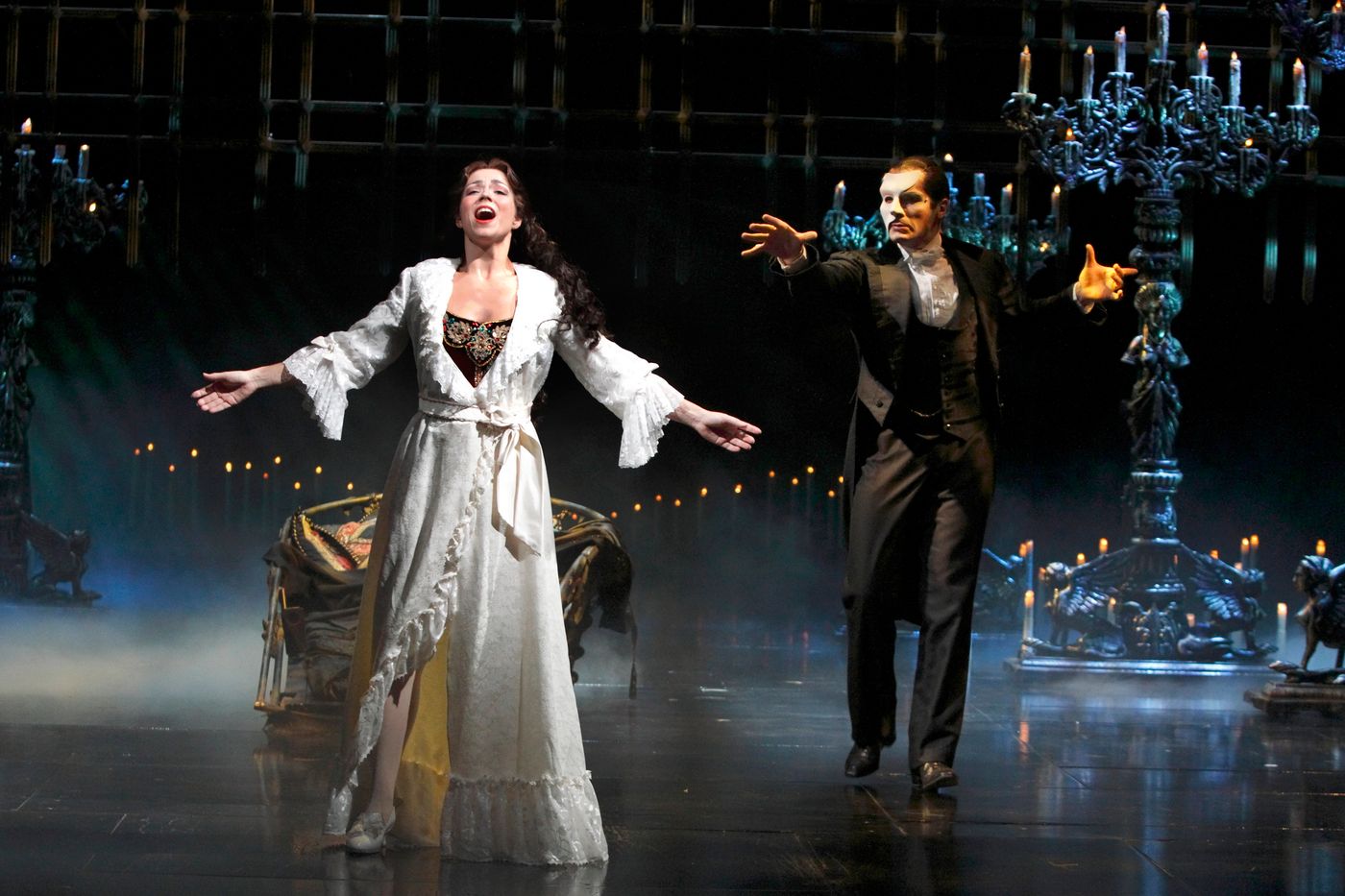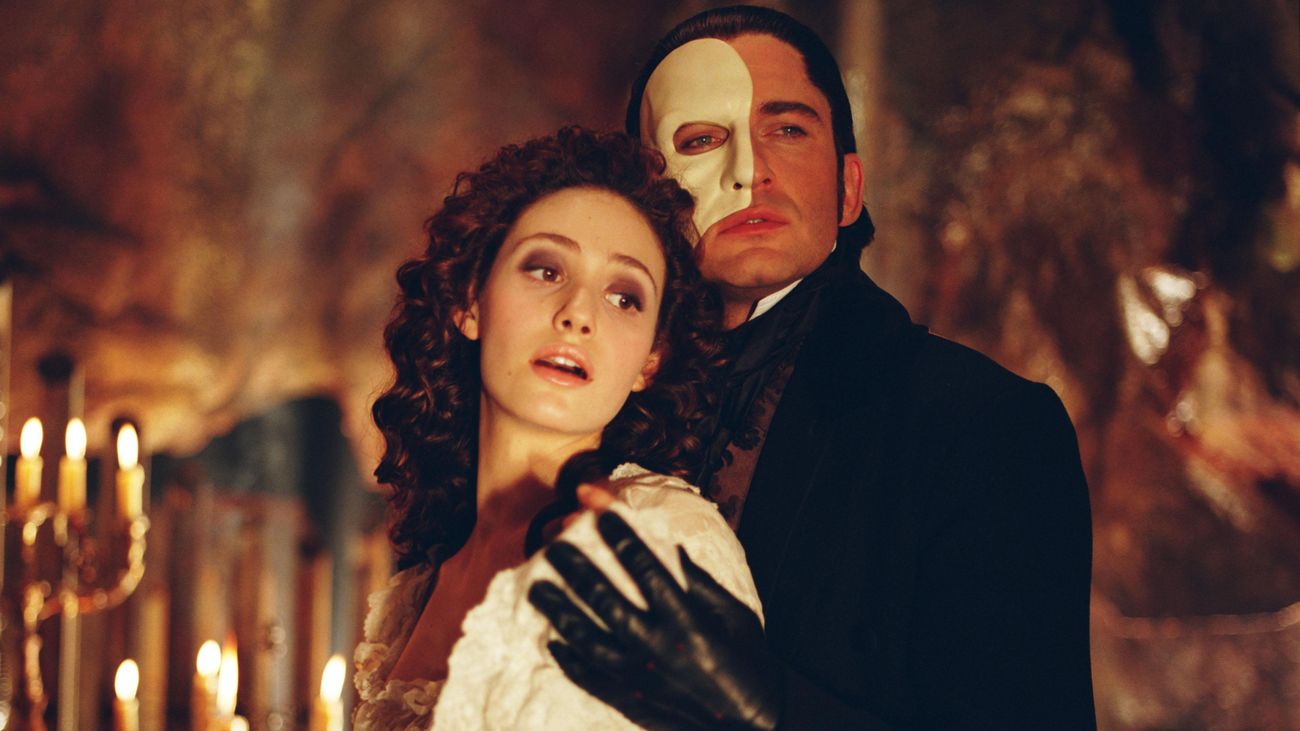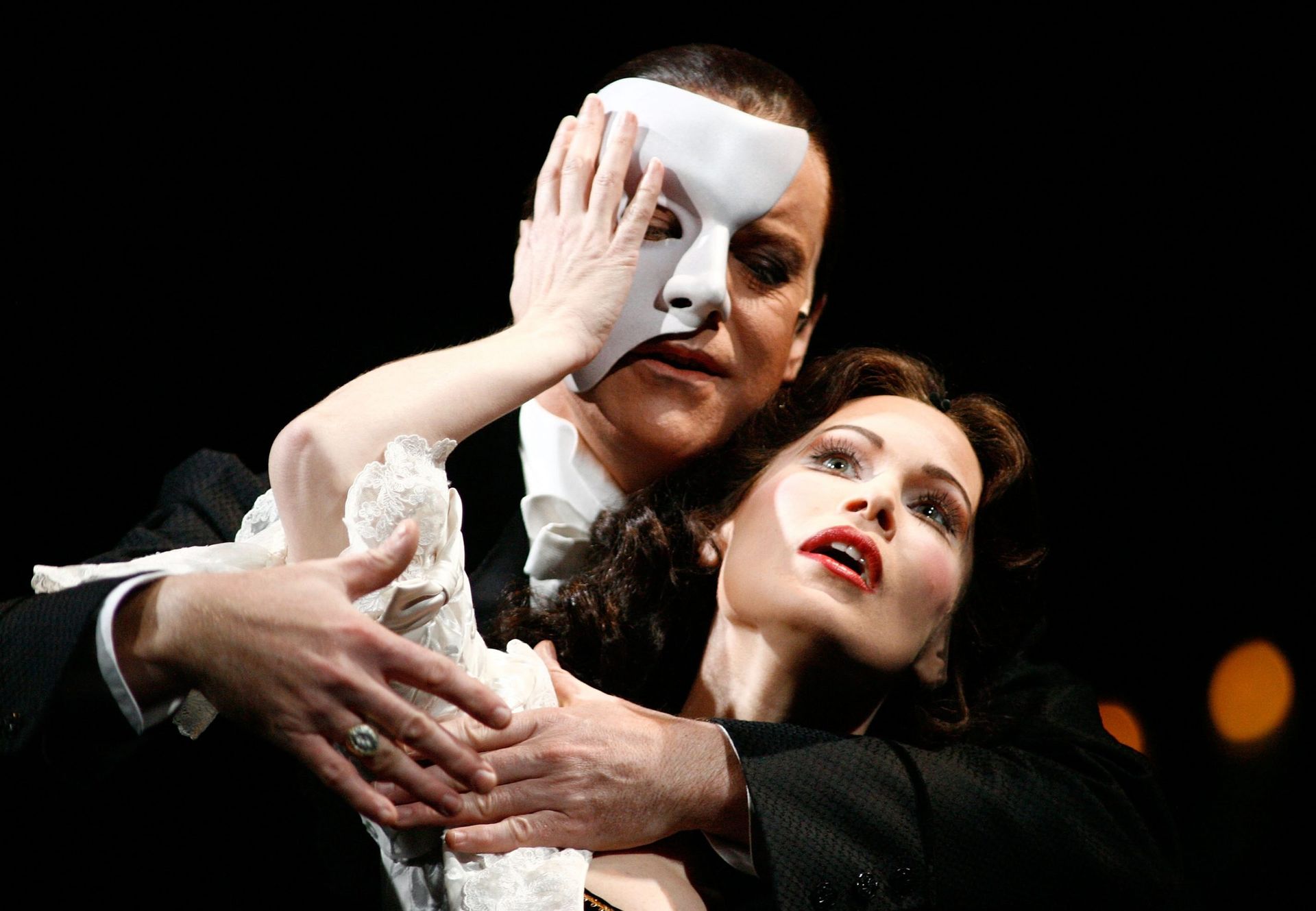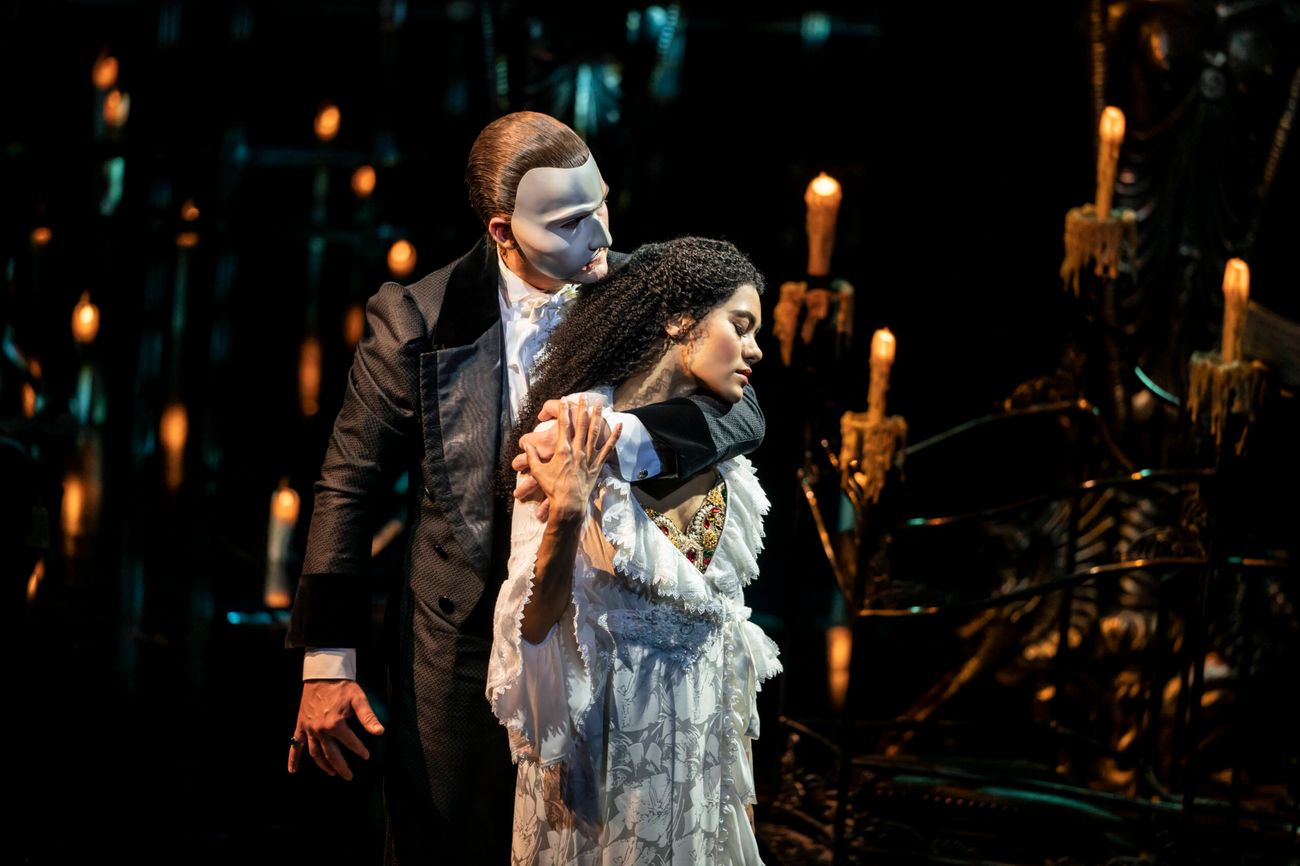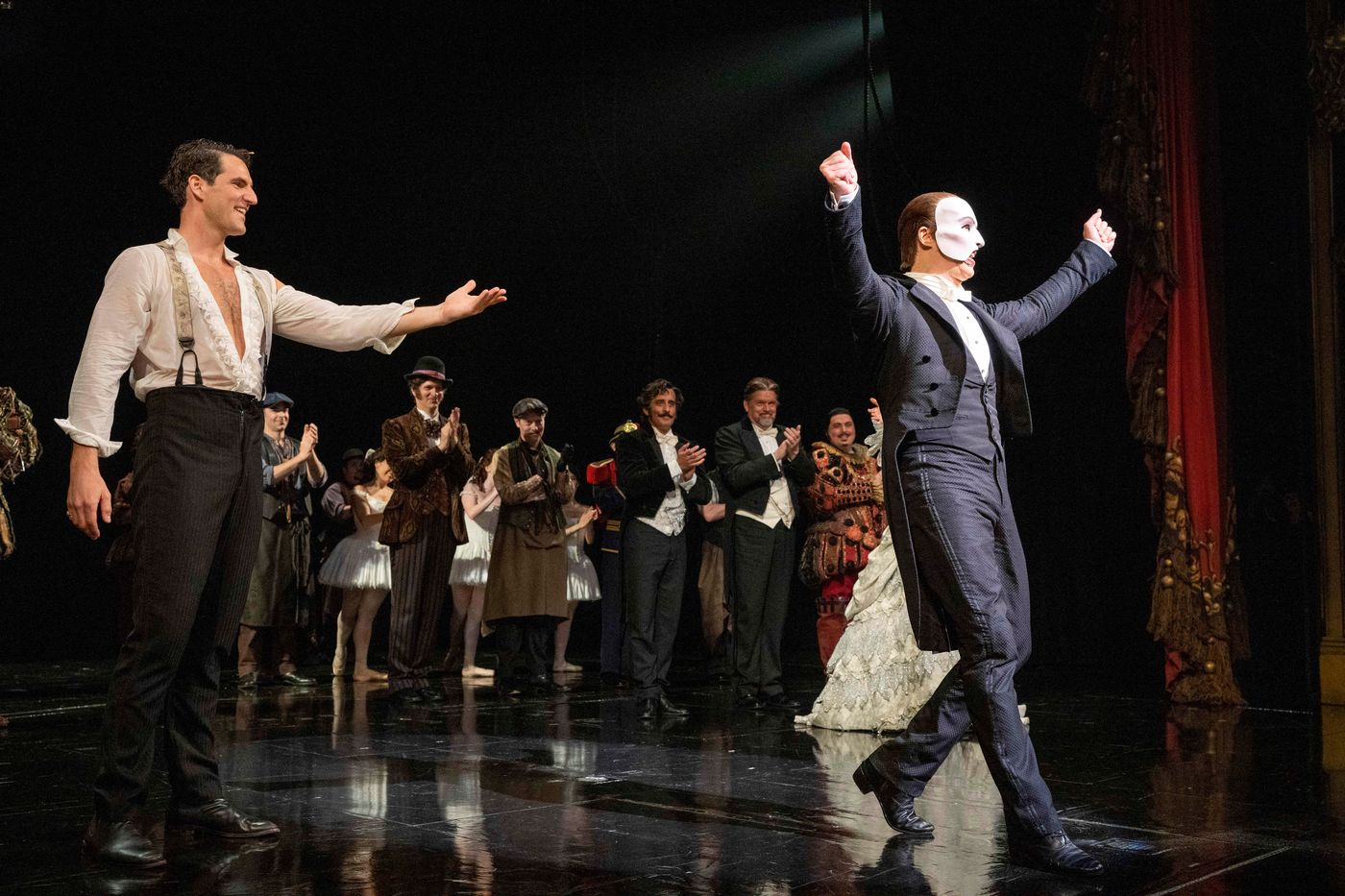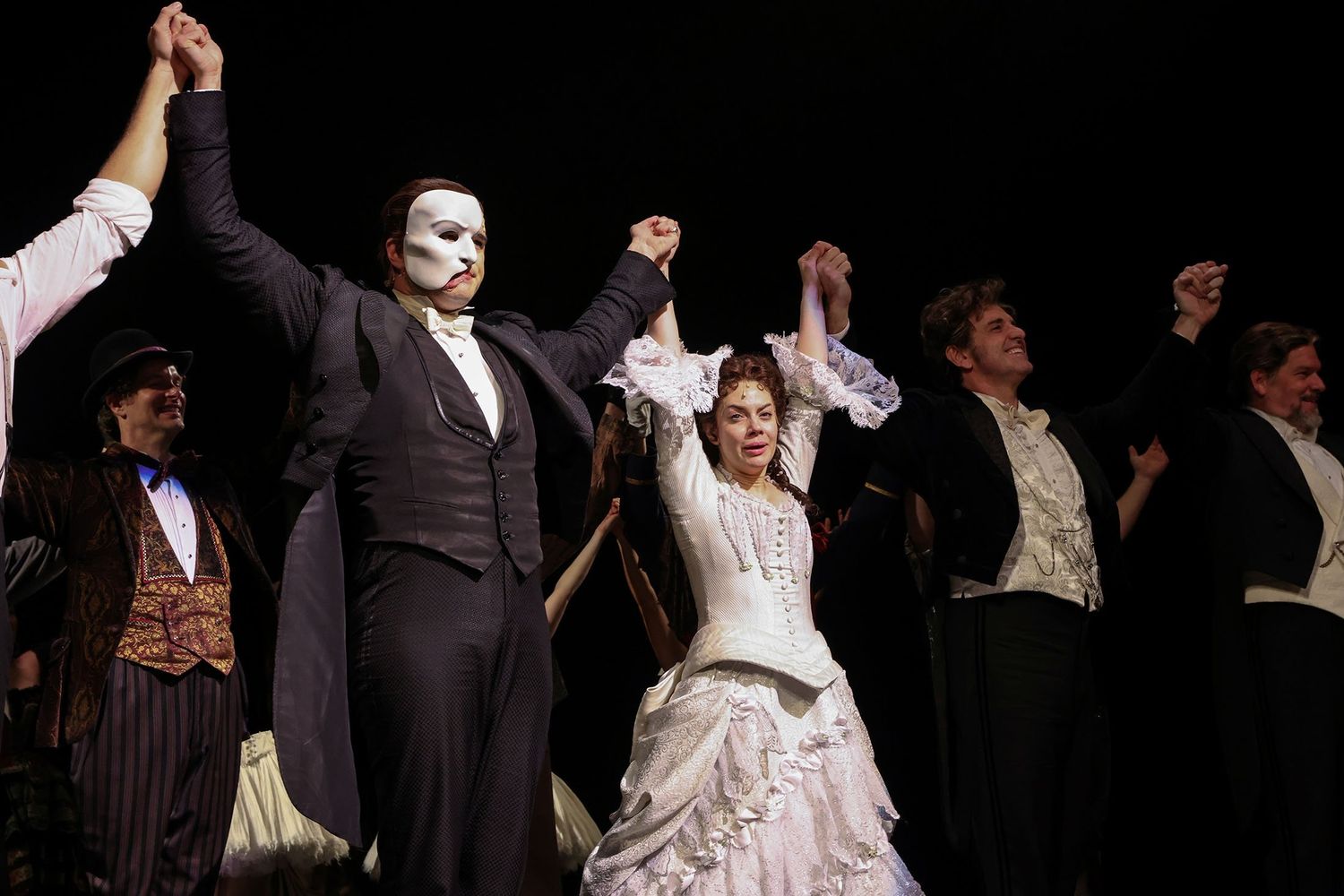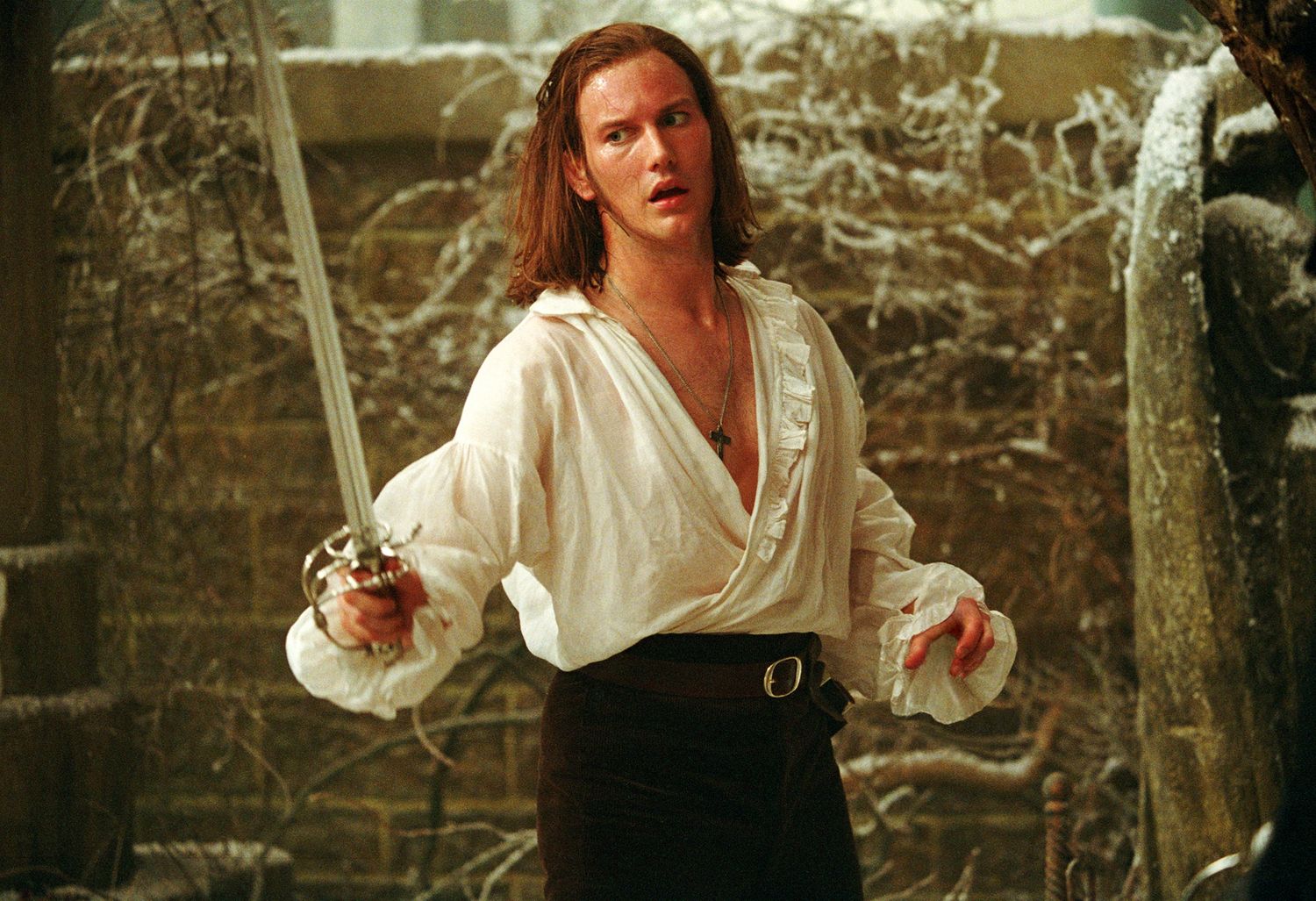Home>Events & Info>Opera>What Is The Story Behind The Phantom Of The Opera?
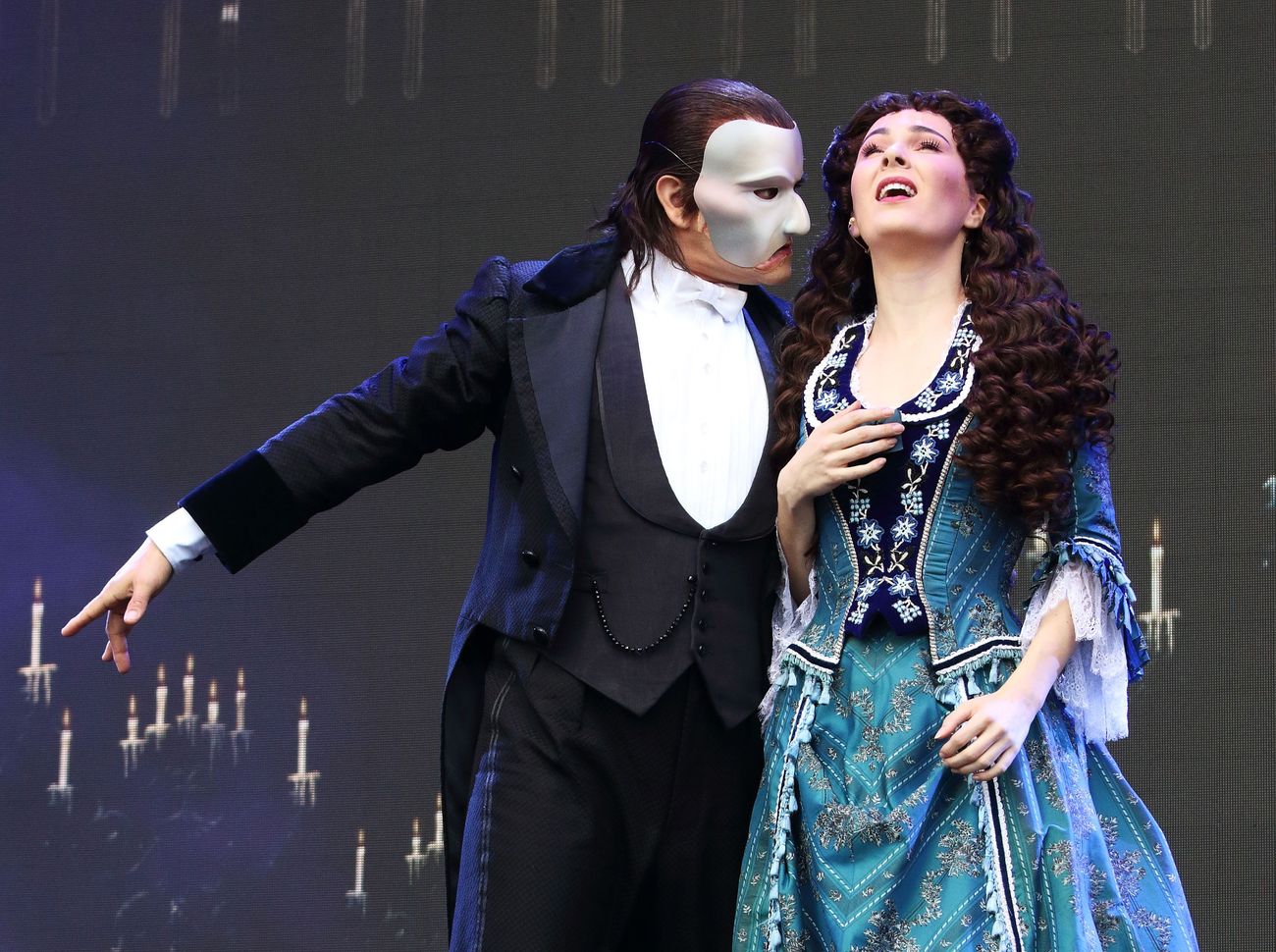

Opera
What Is The Story Behind The Phantom Of The Opera?
Modified: January 22, 2024
Discover the captivating story behind the iconic Phantom of the Opera. Immerse yourself in the world of opera as we unveil its mysterious tale.
(Many of the links in this article redirect to a specific reviewed product. Your purchase of these products through affiliate links helps to generate commission for AudioLover.com, at no extra cost. Learn more)
Table of Contents
Introduction
The Phantom of the Opera is a timeless tale of passion, love, and obsession that has captivated audiences for over a century. This iconic story has become an integral part of popular culture, inspiring countless adaptations, including the beloved Andrew Lloyd Webber musical. But what is the story behind the Phantom of the Opera?
Originally penned by French author Gaston Leroux, the story of the Phantom of the Opera is set in the opulent Paris Opera House in the late 19th century. The novel, first published in 1910, takes readers into the hidden depths of the opera house, where a mysterious and disfigured musical genius lurks.
In this article, we will delve into the intriguing tale of the Phantom of the Opera, uncovering the secrets of the Paris Opera House and exploring the complex relationships that unfold within its walls. From the arrival of the young and talented singer, Christine Daaé, to the haunting and obsession that consumes the Phantom, we will trace the journey of these characters and unravel the mysteries that lie within.
Join us as we embark on a journey through the romantic and enigmatic world of the Phantom of the Opera, discovering the story’s origins, its enduring legacy, and everything in between.
Gaston Leroux’s Novel
The story of the Phantom of the Opera originates from Gaston Leroux’s novel of the same name, published in 1910. Leroux, a French writer known for his detective and mystery novels, was inspired by the Paris Opera House’s grandeur and history when crafting his tale.
The novel introduces readers to a complex and haunting character known as the Phantom or the Opera Ghost. The Phantom, whose real name is Erik, is a tormented genius with immense musical talent. However, his physical deformities, including a skull-like face, make him an outcast from society.
Leroux skillfully weaves a tale of mystery as he explores the Phantom’s past and the reasons behind his obsession with the Paris Opera House. The author presents the opera house itself as a character, its maze-like corridors and hidden chambers becoming the backdrop for the Phantom’s actions.
The novel’s narrative style is a combination of suspense, romance, and horror. Leroux builds tension as the Phantom reveals himself to the opera house inhabitants, causing fear and chaos. At the same time, he introduces a love triangle between the Phantom, Christine Daaé, and Raoul, Vicomte de Chagny, adding a layer of romance and emotional complexity to the story.
Leroux’s novel delves into the dark psyche of its characters, exploring themes of love, obsession, and the power of music. It raises questions about the nature of beauty, identity, and the price one is willing to pay for their desires.
The Phantom of the Opera quickly gained popularity upon its release, captivating readers with its thrilling plot and vivid descriptions. The novel’s success led to numerous adaptations, including stage plays, films, and the famous Andrew Lloyd Webber musical.
Even today, over a century later, Gaston Leroux’s novel continues to enthrall audiences with its timeless tale of love and longing, leaving behind a lasting legacy that resonates with readers and theater-goers around the world.
The Paris Opera House
The Paris Opera House, also known as the Palais Garnier, serves as the majestic setting for the story of the Phantom of the Opera. This architectural masterpiece, located in the heart of Paris, was designed by Charles Garnier and opened its doors in 1875.
The Opera House is a symbol of 19th-century grandeur, boasting a stunning blend of artistic styles, including Beaux-Arts and Second Empire. Its opulent façade features ornate sculptures, intricate carvings, and a majestic central dome, attracting visitors from around the world.
Inside, the Opera House reveals a world of grandeur and elegance. The auditorium, with its plush velvet seats and gilded balconies, exudes a sense of luxury. The main staircase, adorned with marble and gold, is a sight to behold, leading guests into a realm of artistic splendor.
The Phantom of the Opera dives deep into the Opera House’s hidden passages and secret chambers. Beneath the bustling hallways and grandeur of the public areas lies a labyrinth of hidden corridors and underground catacombs, providing an eerie backdrop for the Phantom’s mysterious escapades.
Leroux expertly brings the Opera House to life through rich descriptions, highlighting its architectural wonders and the juxtaposition of its public and hidden spaces. He beautifully captures the essence of this iconic landmark, immersing readers in its enchanting ambiance.
Today, the Paris Opera House continues to be a vibrant hub for operas, ballets, and other theatrical performances. Visitors can explore its grand interiors through guided tours and witness the magic of live performances within its hallowed halls.
As you delve into the story of the Phantom of the Opera, the Paris Opera House reveals itself as a character in its own right. Its sinister allure and captivating beauty add depth to the narrative, creating a one-of-a-kind setting that enhances the intrigue and mystique of the story.
The Legend of the Phantom
The legend of the Phantom of the Opera has captivated imaginations for centuries, transcending its origins in Gaston Leroux’s novel. While the story of the disfigured musical genius haunting the Paris Opera House may be fictional, legends and myths surrounding similar characters have existed throughout history.
Legends of supernatural beings residing in grand theaters or opera houses can be traced back to ancient Greek mythology. Tales of mysterious entities with extraordinary talents or cursed deformities have been passed down through generations, fueling the fascination with stories like that of the Phantom.
One famous precursor to the Phantom legend is the myth of Orpheus, the legendary musician who could charm all with his music. Similarly, the Phantom possesses phenomenal musical abilities, using them to both enchant and terrify those around him.
The concept of a tormented, masked figure lurking beneath the surface has also resonated with audiences throughout history. The idea of hiding one’s true self behind a mask or disguise is a recurring theme in literature and theater, symbolizing the inner demons and desires that we often keep hidden from the world.
Furthermore, the allure of the mysterious and the unknown has always captivated human imagination. The legend of the Phantom taps into our fascination with the supernatural and the enigmatic, offering a glimpse into the darker recesses of the human psyche.
While the specific story of the Phantom of the Opera may have emerged from Leroux’s imagination, its roots in ancient mythology and universal human themes make it a tale that resonates with people across cultures and generations.
Whether viewed as a romantic hero, a tragic figure, or a villain, the legend of the Phantom has endured, inspiring countless adaptations and interpretations. Through these retellings, the myth has taken on new life, allowing each generation to interpret and connect with the character and the themes he represents.
As we delve further into the story of the Phantom of the Opera, we will uncover the depth and complexities of this legendary character and his enduring legacy in the world of literature and theater.
Christine Daaé’s Arrival
One of the pivotal moments in the story of the Phantom of the Opera is the arrival of Christine Daaé, a young and talented singer, at the Paris Opera House. Her entry into this world sets in motion a series of events that will forever change the lives of those involved.
Christine, a chorus girl with hidden vocal abilities, catches the attention of the infamous Phantom with her angelic voice. Unbeknownst to her, she has a connection to the Phantom that reaches beyond her musical talents.
As Christine catches the eye of the opera’s new patron, Raoul, Vicomte de Chagny, tensions begin to rise. Raoul, who is infatuated with Christine, becomes captivated by her talent and beauty. However, the Phantom’s obsession with Christine intensifies as he believes she represents the love and acceptance he has always longed for.
As Christine is taken under the Phantom’s wing, she undergoes a transformation in her voice and stage presence. The Phantom, acting as her mysterious mentor, pushes her to reach her full potential while keeping his true identity hidden.
The relationship between Christine, Raoul, and the Phantom becomes increasingly complex as their emotions and desires intertwine. Christine is torn between her gratitude towards the Phantom for his mentorship and her growing feelings for Raoul. Meanwhile, the Phantom’s possessiveness and jealousy encroach upon their budding romance.
Christine’s arrival also uncovers the dark secrets of the Opera House. As she explores the hidden corridors and secret chambers, she becomes entangled in a web of mystery and intrigue, gradually unraveling the truth about the Phantom’s past and his connection to the opera house.
Throughout the story, Christine’s character undergoes a profound transformation. From a young girl with raw talent, she blossoms into a confident and independent woman, discovering her own strength and agency in the face of the Phantom’s haunting presence.
The arrival of Christine Daaé in the Paris Opera House becomes the catalyst for a tumultuous series of events, exploring themes of love, desire, and the pursuit of artistic excellence. Her journey unfolds against the backdrop of a hauntingly beautiful tale that continues to captivate audiences around the world.
The Haunting Begins
With Christine Daaé settling into her newfound success at the Paris Opera House, the haunting presence of the Phantom starts to make itself known. As the plot thickens, the tension and mystery surrounding the Phantom’s actions intensify, engulfing the lives of those within the opera house.
Strange occurrences and inexplicable events unfold, leaving the opera house’s inhabitants on edge. From falling chandeliers to eerie whispers in the dark, the Phantom’s presence is felt by all. The atmosphere becomes charged with fear, anticipation, and a sense of impending doom.
The Phantom’s acts of sabotage and manipulation disrupt the opera house’s operations, eliciting chaos and panic. His obsession with Christine amplifies as he seeks to control her career and personal life, ensuring her loyalty and love.
As the Phantom’s haunting grows more sinister, the tension between Christine, Raoul, and the Phantom reaches its peak. Raoul becomes determined to protect Christine from the Phantom’s clutches, threatening to unravel the dark secrets that lie within the opera house.
Throughout this section of the story, Leroux skillfully weaves an atmosphere of suspense and mystery, drawing readers deeper into the Phantom’s web of deception. Each twisted act carried out by the masked figure keeps readers enthralled, wondering what lengths the Phantom will go to in order to fulfill his desires.
With each passing moment, the haunting presence of the Phantom becomes more palpable, instilling a palpable sense of dread and anticipation within both the characters and the readers. It is in this section that the Phantom’s true power and the extent of his obsession are fully revealed.
As the haunting intensifies, readers are thrust into a world where the line between reality and the supernatural blurs. It is within this chilling atmosphere that the characters are forced to confront their deepest fears and make choices that will ultimately shape their destinies.
The haunting that grips the Paris Opera House is a testament to the enduring legacy of the Phantom of the Opera. It highlights the limitless power of obsession and the dark depths of the human psyche, creating a truly captivating and haunting tale that continues to captivate audiences to this day.
The Phantom’s Obsession
At the heart of the story of the Phantom of the Opera lies a deeply rooted obsession that consumes the titular character, Erik, also known as the Phantom. His obsession with Christine Daaé, driven by a desperate longing for love and acceptance, drives the narrative forward and shapes the lives of those around him.
The Phantom’s obsession with Christine extends beyond her extraordinary vocal talent and beauty. He sees in her the embodiment of all the love and admiration that he has longed for his entire life. His disfigurement and isolation have left him scarred both physically and emotionally, making him believe that he is unlovable and unworthy of the affection he craves.
His obsession manifests in various ways, from anonymous gifts left for Christine to orchestrating her rise in the opera world. The Phantom’s manipulation and control over her life highlight the depths of his fixation and the lengths he is willing to go to possess her.
Driven by his desire to mold Christine into the perfect woman and artist, the Phantom becomes both mentor and captor. His teachings elevate her talent, but also instill fear in her heart, blurring the lines between admiration and coercion.
The Phantom’s obsession with Christine is multifaceted and complex. It is a blend of love, possessiveness, and an insatiable need for validation. In his mind, she represents his last chance at finding happiness and acceptance, and he will stop at nothing to make her his own.
However, as the story unfolds, it becomes clear that the Phantom’s love for Christine is ultimately self-destructive. His inability to let go of his obsession leads him down a path of darkness and despair, culminating in a tragic and dramatic climax.
At its core, the Phantom’s obsession serves as a cautionary tale, highlighting the destructive power of unchecked desires and the consequences of allowing one’s fixation to override reason and empathy. It underscores the desperate measures a person may take in an attempt to fulfill their deepest longings, ultimately leading to their own downfall.
The theme of obsession resonates with audiences, as it speaks to the universal human experience of longing, unrequited love, and the eternal search for acceptance. The Phantom’s obsession is a chilling reminder of the dangers that lie within the unbalanced pursuit of our desires, leaving a lasting impression on those who delve into his haunting story.
The Love Triangle: Raoul, Christine, and the Phantom
The love triangle between Raoul, Christine, and the Phantom lies at the heart of the Phantom of the Opera’s captivating narrative. It explores the complexities of love, desire, and the conflicts that arise when two men vie for the affection of one woman.
Raoul, the dashing and noble Vicomte de Chagny, represents the traditional image of a romantic hero. He is captivated by Christine’s beauty and talent, and his love for her is pure and unwavering. Raoul’s affection for Christine is driven by a genuine desire for her happiness and a quest for a conventional, reciprocal love.
On the other hand, the Phantom’s love for Christine is rooted in a deeply obsessive and possessive nature. His intense infatuation with her goes beyond rationale, leading him to dark and manipulative actions. Despite his ruthless and haunting nature, the Phantom’s emotions are complex, blurring the lines between love and possession.
The complicated dynamics of this love triangle are further accentuated by Christine’s own internal struggle. As a young and vulnerable artist, she finds herself torn between the safe embrace of Raoul’s unconditional love and the unpredictable allure of the Phantom’s mysterious grip on her heart.
Throughout the story, Leroux masterfully explores the conflicts that arise from this love triangle. The tension between Raoul and the Phantom, fueled by their shared love for Christine, creates a palpable atmosphere of rivalry, jealousy, and danger. Their pursuit of her affection ignites a battle that transcends the physical realm, testing their morality and challenging their very identities.
As the narrative progresses, Christine is forced to confront her feelings and make a choice between the two men. Her decision holds the power to either bring resolution or ignite further chaos within the confines of the Paris Opera House.
By delving into the complexities of this love triangle, the story delves into themes of loyalty, sacrifice, and the transformative power of love. It challenges conventional notions of romance and explores the depths of human emotion, highlighting the profound impact that love can have on individuals and the choices they make.
The love triangle in the Phantom of the Opera is a testament to the enduring appeal of star-crossed romances, as well as the timeless struggle between desire, duty, and the pursuit of happiness. It adds a layer of emotional depth to the narrative, captivating audiences and leaving them questioning the boundaries of love and the consequences of choice.
The Unmasking of the Phantom
One of the most dramatic and pivotal moments in the Phantom of the Opera is the unmasking of the Phantom. This climactic scene reveals the face behind the mask, exposing the Phantom’s true identity and laying bare his vulnerability.
Throughout the story, the Phantom is shrouded in an aura of mystery and secrecy, hiding his disfigured face behind a mask. This mask becomes a symbol of his otherness, his seclusion from society, and the phantom-like presence he adopts within the catacombs of the opera house.
However, the unmasking of the Phantom brings forth a moment of shocking revelation. As the mask is forcibly removed, the true face of Erik, the tormented genius, is exposed to the characters within the opera house and to the readers themselves.
This profound moment carries immense significance, as it not only amplifies the visual impact of the Phantom’s deformity but also lays bare the emotional and psychological scars that have shaped his life. It forces the characters and the audience to confront the true nature of the Phantom’s existence.
The unmasking scene evokes a range of reactions from the characters involved. For Christine, it is a moment of both terror and empathy, as she comes face to face with the vulnerability of the man who has controlled and haunted her life. Raoul, on the other hand, is confronted with a startling revelation that challenges his perception of the Phantom as a mere villain.
As readers, the unmasking of the Phantom invites us to question our own prejudices and assumptions about beauty and acceptance. It challenges us to look beyond physical appearances and delve deeper into the complexities of the human spirit.
Furthermore, the unmasking scene serves as a turning point in the story, triggering a chain of events that leads to the ultimate climax. It sets in motion an intensified battle between the characters, fueled by newfound understanding and a deeper exploration of their own emotions.
With the unmasking of the Phantom, Gaston Leroux invites us to witness the vulnerability, pain, and longing that lie beneath the sordid exterior of a man who has been rejected by society. It humanizes the Phantom, leading us to question the true nature of monstrosity and the capacity for redemption and compassion.
The unmasking scene in the Phantom of the Opera pierces through the masks that we all wear, exposing our inner selves and the depths of our desires. It is a moment of revelation, and perhaps, even a moment of reckoning, that forever alters the course of the story and leaves a lasting impact on the characters and readers alike.
The Final Confrontation
The final confrontation in The Phantom of the Opera is the climactic moment where all the tensions and conflicts within the story reach their boiling point. It is a culmination of the intense emotions, obsession, and desire that have driven the characters throughout the narrative.
As the story approaches its climax, the Phantom’s grip on the Paris Opera House and its inhabitants tightens. His obsession with Christine reaches its zenith, and his actions become increasingly desperate and dangerous.
Raoul, determined to rescue Christine from the Phantom’s clutches, devises a plan to confront the mysterious figure and put an end to the terror that has plagued their lives. This leads to a thrilling and high-stakes face-off between Raoul, the embodiment of love and bravery, and the Phantom, a deeply scarred and tormented soul.
The final confrontation is filled with tension, as the fate of the characters hangs in the balance. It is a battle not just of physical strength, but also of moral and emotional fortitude. The Phantom’s power to manipulate and control is tested, while Raoul must summon all his courage to protect the woman he loves.
In this climactic moment, Leroux explores the depths of the Phantom’s character, delving into the reasons behind his actions and his ultimate desire for redemption and acceptance. It is a visceral showdown between light and darkness, good and evil, where the characters are forced to confront their deepest fears and face the consequences of their choices.
As the final confrontation unfolds, readers are drawn into a maelstrom of emotions. The intense emotions of love, fear, and vengeance collide, creating a gripping and unforgettable climax that leaves a lasting impact.
The resolution of the final confrontation reveals the true nature of the characters and brings closure to their arcs. It showcases the transformative power of love, the complexities of human nature, and the potential for redemption.
Through the final confrontation, The Phantom of the Opera explores themes of sacrifice, forgiveness, and the capacity for change. It takes readers on an emotional rollercoaster, immersing them in a battle that transcends the physical realm and forces characters and readers alike to confront the darkest parts of their souls.
This climactic moment not only provides resolution to the story but also leaves lingering questions about the nature of identity, beauty, and the power of compassion. It is a testament to the enduring power of the narrative, as the final confrontation is etched in the memory of readers long after they turn the last page.
The Legacy of The Phantom of the Opera
The Phantom of the Opera has left an indelible mark on the world of literature, theater, and popular culture. Its enduring legacy can be seen in the countless adaptations, homages, and continued popularity of the story over a century since its initial publication.
One of the most notable contributions of The Phantom of the Opera is Andrew Lloyd Webber’s acclaimed musical adaptation. Since its premiere in 1986, the musical has become a global phenomenon, captivating audiences with its iconic songs, lavish sets, and dazzling performances. It has earned numerous awards and holds the record as the longest-running show on Broadway.
Furthermore, the musical has sparked a renewed interest in the original novel, bringing Gaston Leroux’s story to new generations of readers. Readers continue to be captivated by the haunting tale, its complex characters, and the profound themes it explores.
The impact of The Phantom of the Opera extends beyond the theater and literary world. It has inspired a wide range of artistic adaptations, including film adaptations, ballets, and operatic productions. The story’s themes of unrequited love, obsession, and the pursuit of individuality resonate with audiences of all ages and backgrounds.
The Phantom himself has become an iconic figure, emblematic of the tortured anti-hero. His image has been adapted and reimagined in various forms of media, cementing his status as a pop culture icon. From Halloween costumes to fan art, the Phantom’s disfigured face and haunting presence continue to captivate and fascinate.
Moreover, The Phantom of the Opera has made a significant impact on the theater industry. Its success has paved the way for other musicals with dark and emotionally complex themes, challenging traditional narratives and pushing the boundaries of what a musical can be.
As the legacy of The Phantom of the Opera endures, it serves as a testament to the power of storytelling and its ability to transcend time and boundaries. The universal themes of love, longing, and the search for acceptance continue to resonate with audiences, reminding us of the timeless human experiences we all share.
Whether through the musical, the novel, or the various adaptations, The Phantom of the Opera continues to captivate and enchant audiences worldwide. Its legacy as a beloved tale of passion, music, and the complexities of the human soul ensures that it will remain an enduring part of the cultural landscape for generations to come.
Conclusion
The Phantom of the Opera is a story that has withstood the test of time, captivating audiences with its tale of passion, love, and obsession. From its origins in Gaston Leroux’s novel to the iconic Andrew Lloyd Webber musical and its various adaptations, the story has left an indelible mark on literature, theater, and popular culture.
Exploring the depths of human emotion, The Phantom of the Opera delves into themes of love, desire, sacrifice, and the pursuit of artistic excellence. It takes readers on a journey through the opulent Paris Opera House, immersing them in a world of mystery, romance, and haunting melodies.
The characters within the story, from the tormented Phantom to the talented Christine and the noble Raoul, bring depth and complexity to the narrative. Their intertwined destinies and the love triangle that ensues captivate readers, challenging their perceptions of beauty, morality, and the power of redemption.
Throughout the story, Gaston Leroux skillfully crafts an atmospheric tale that combines elements of suspense, romance, and horror. His intricate portrayal of the Paris Opera House as a character itself adds to the allure and intrigue of the story, with its hidden corridors, secret chambers, and labyrinthine passages.
The enduring legacy of The Phantom of the Opera is a testament to the timeless power of storytelling. From its haunting melodies to its poignant themes, the story continues to resonate with audiences of all ages and backgrounds, sparking imagination, evoking emotions, and challenging societal norms.
Whether experienced through the pages of the original novel, the mesmerizing melodies of the musical, or the visual spectacles of its adaptations, The Phantom of the Opera invites us to delve into the depths of human emotion and confront our own desires, fears, and longings.
As the legacy of The Phantom of the Opera lives on, it serves as a reminder of the enduring impact of literature and theater. It reminds us of the power of the arts to transport us to other worlds, to challenge our perspectives, and to connect us with the shared experiences of humanity.
In the end, The Phantom of the Opera stands as a testament to the timeless allure of the human spirit, the beauty of art, and the enduring power of a well-told story.

